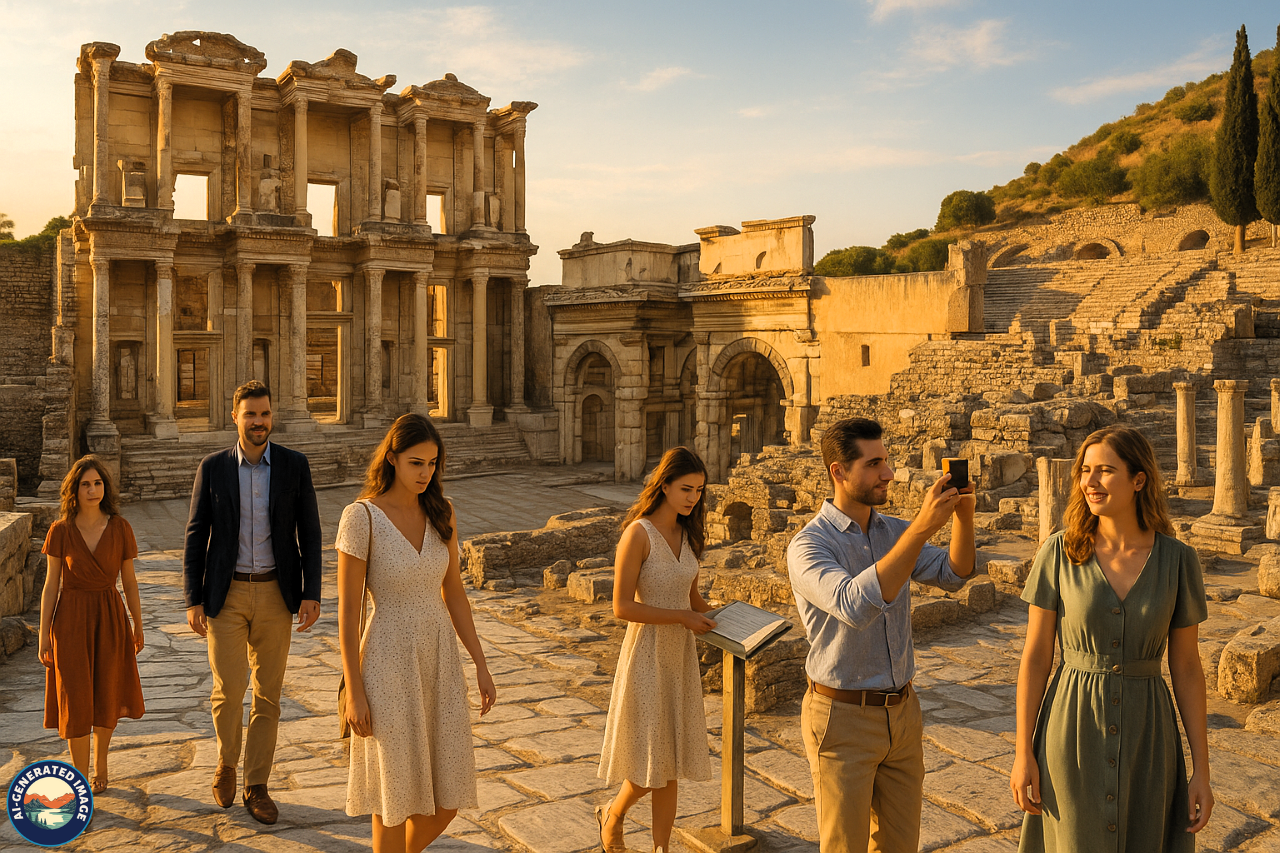Introduction
Ephesus is a place where history comes alive beneath your feet. Located near modern Selçuk in Turkey’s Aegean region, this ancient city was once a thriving hub of culture, commerce, and faith. Today, it welcomes travelers eager to explore its remarkably preserved ruins and walk in the footsteps of philosophers, emperors, and traders who shaped its legacy.
This detailed guide will take you through Ephesus’s rich history, iconic monuments, cultural impact, and practical travel tips. Whether you’re planning a visit or simply fascinated by the ancient world, you’ll find all the essential insights here.
The Historical Legacy of Ephesus
The origins of Ephesus are woven into myths and legends. Some tales speak of the Amazons, the warrior women, as their founders, while others attribute their creation to Androclus, a prince guided by an oracle’s prophecy. Archaeological evidence suggests that settlements here date back to the 10th century BCE.
Ephesus flourished first under Greek influence and later during Roman times, when it became one of the empire’s largest cities, with an estimated population of a quarter-million. Its harbor linked it to global trade routes, bringing prosperity and cultural exchange. The city was famous not only for its wealth but also for its intellectual and spiritual contributions.
Over the centuries, earthquakes, the silting of its harbor, and repeated invasions led to the city’s decline. Eventually, Ephesus was abandoned, leaving behind the silent grandeur of its monuments.
Top Attractions and Monuments
Library of Celsus
The Library of Celsus is one of Ephesus’s most photographed landmarks. Built in the 2nd century CE as a memorial to Tiberius Julius Celsus, a Roman governor, it once housed thousands of scrolls. Its restored façade—with columns, niches, and statues—gives visitors a glimpse of the city’s former splendor. Beneath the library lies Celsus’s tomb, making this building a unique blend of knowledge and remembrance.
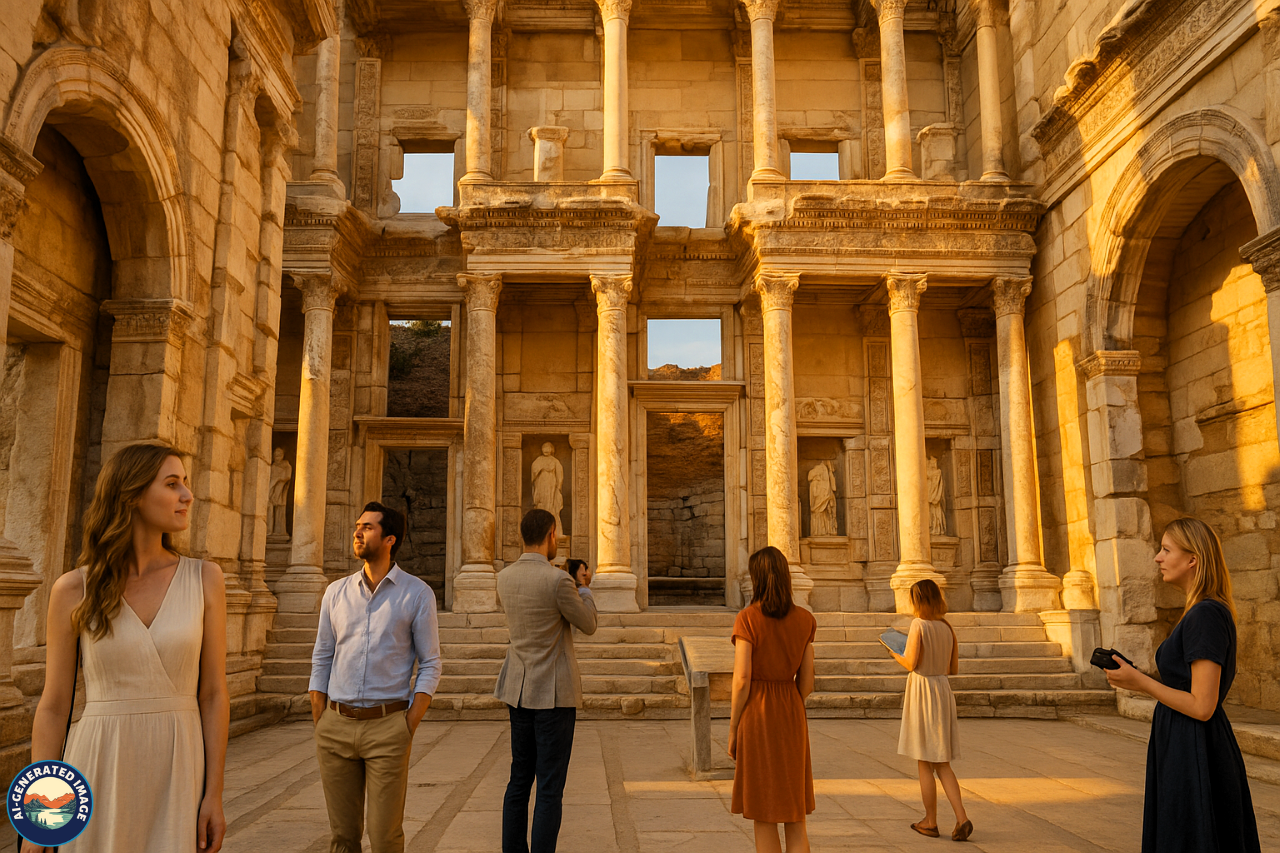
The Great Theatre
This vast amphitheater could hold around 25,000 spectators and was the venue for plays, musical events, and gladiator battles. Carved into a hillside, its design offers excellent acoustics even today. Climb to the top for panoramic views of the ruins and the surrounding countryside. The theatre is also known for its link to Saint Paul, who delivered sermons here.
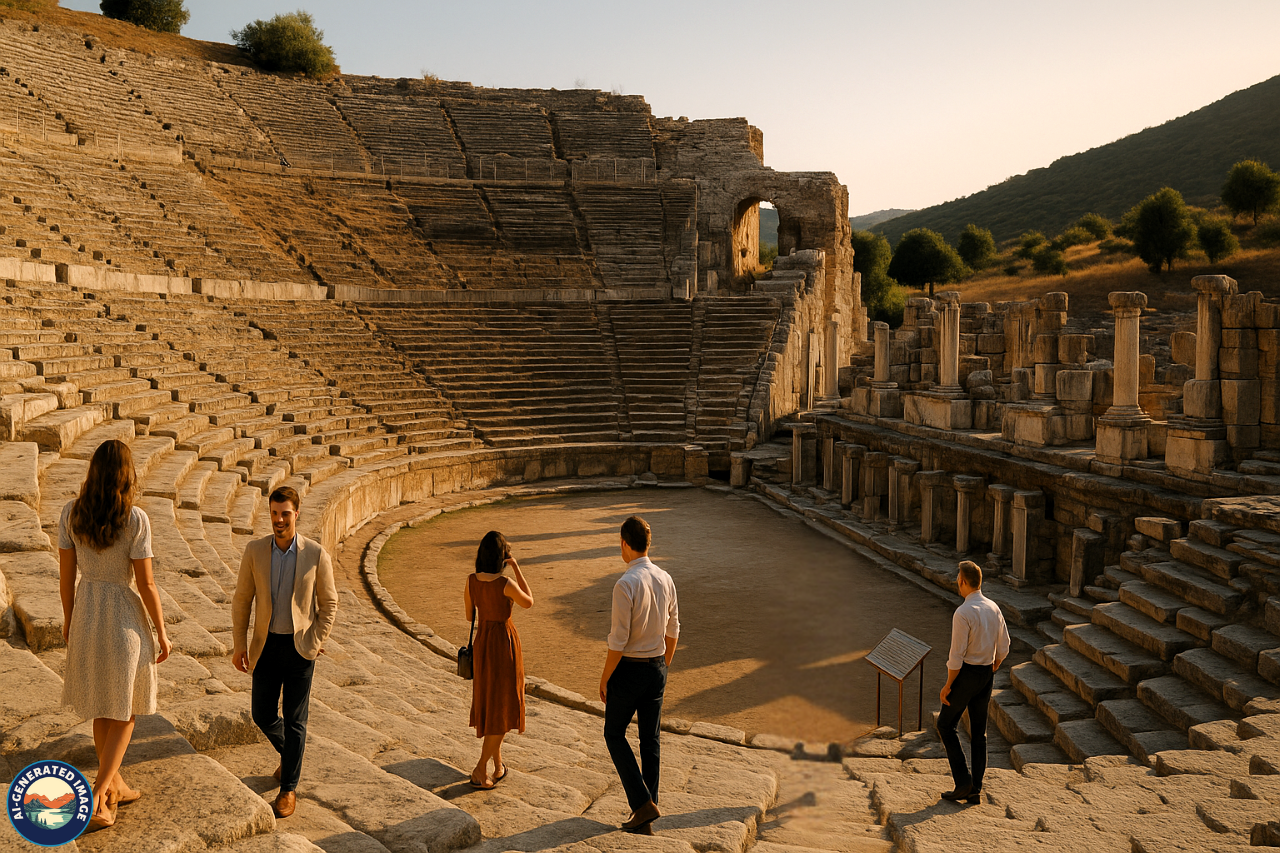
Temple of Artemis
Though little remains today, the Temple of Artemis site reminds us of its former status as one of the Seven Wonders of the Ancient World. Once a vast sanctuary for worshippers of the goddess, it symbolized the city’s religious and cultural significance.
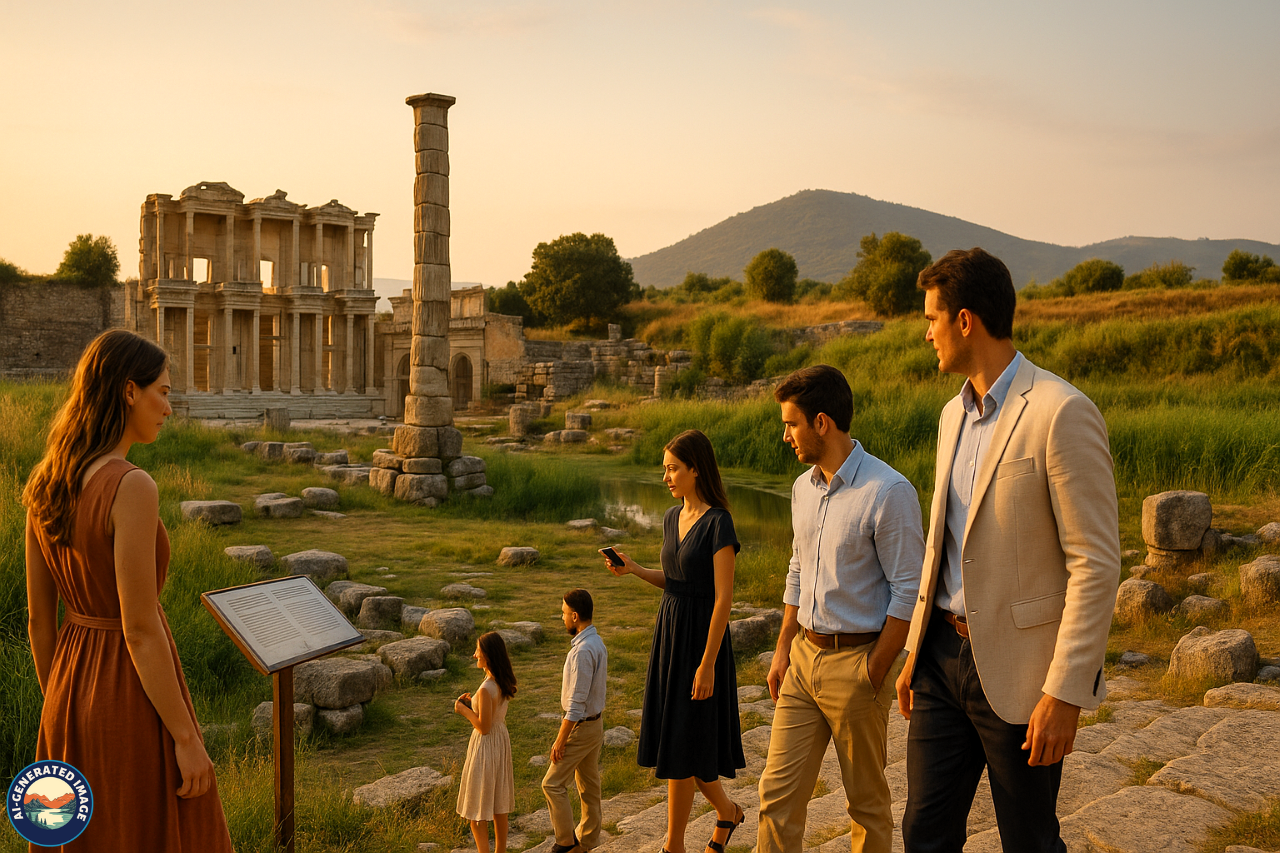
Terrace Houses
Set on the slopes of Bulbul Mountain, these luxurious Roman residences reveal the refined lifestyle of Ephesus’s elite. With mosaic floors, vivid frescoes, and evidence of underfloor heating, these homes illustrate the advanced engineering and artistic taste of the era.
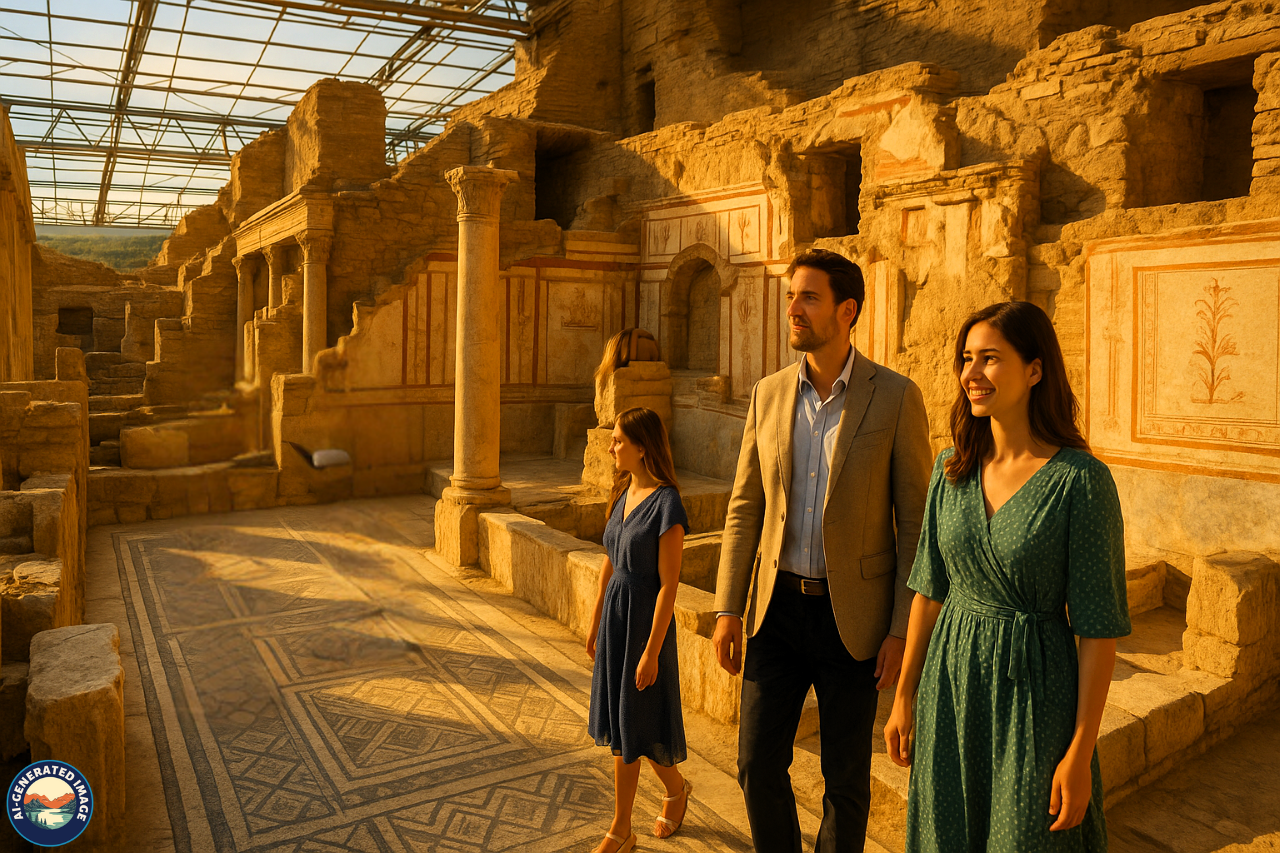
Marble Road and Curetes Street
Walking along these ancient streets gives a real sense of daily life in Ephesus. The Marble Road, linking the library and theatre, still bears grooves from centuries of cartwheels. Curetes Street was lined with shops, fountains, and statues, forming a bustling artery through the city.
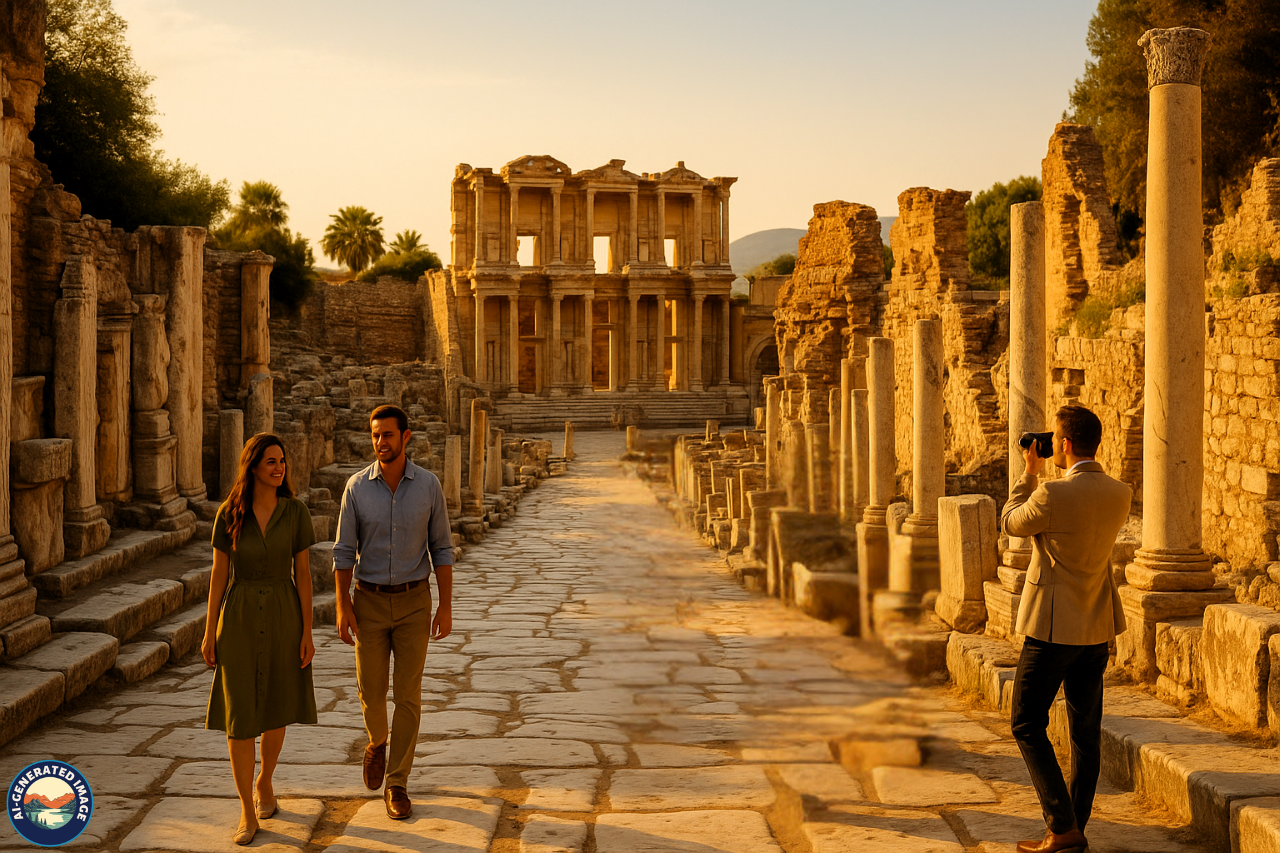
Temple of Hadrian
Dedicated to Emperor Hadrian, this small temple is famous for its intricate carvings and decorative friezes, which depict gods and legends tied to the city’s foundation.
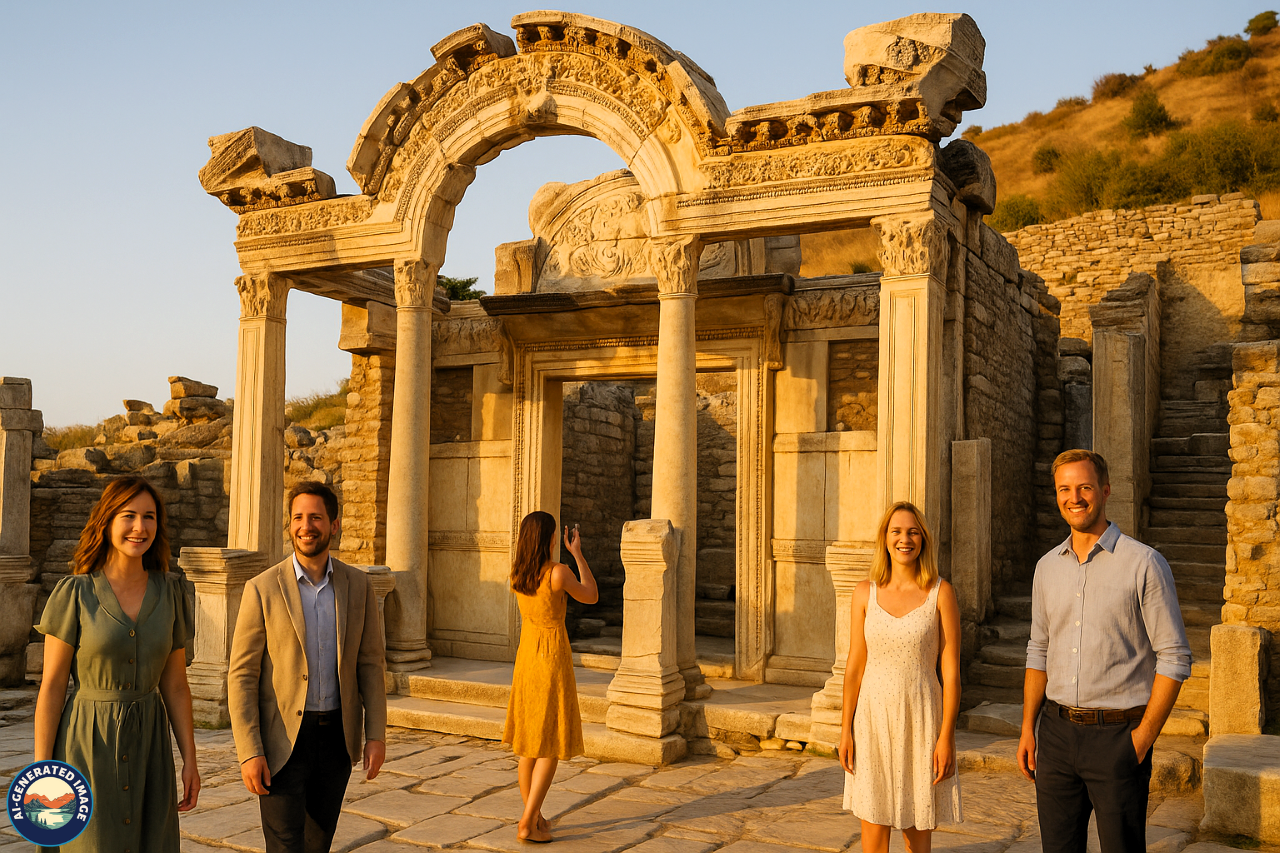
Basilica of St. John
Situated on Ayasuluk Hill, the basilica was built in the 6th century CE over what is believed to be the burial site of the Apostle John. Though largely in ruins, it offers magnificent views and holds deep spiritual significance for Christian visitors.
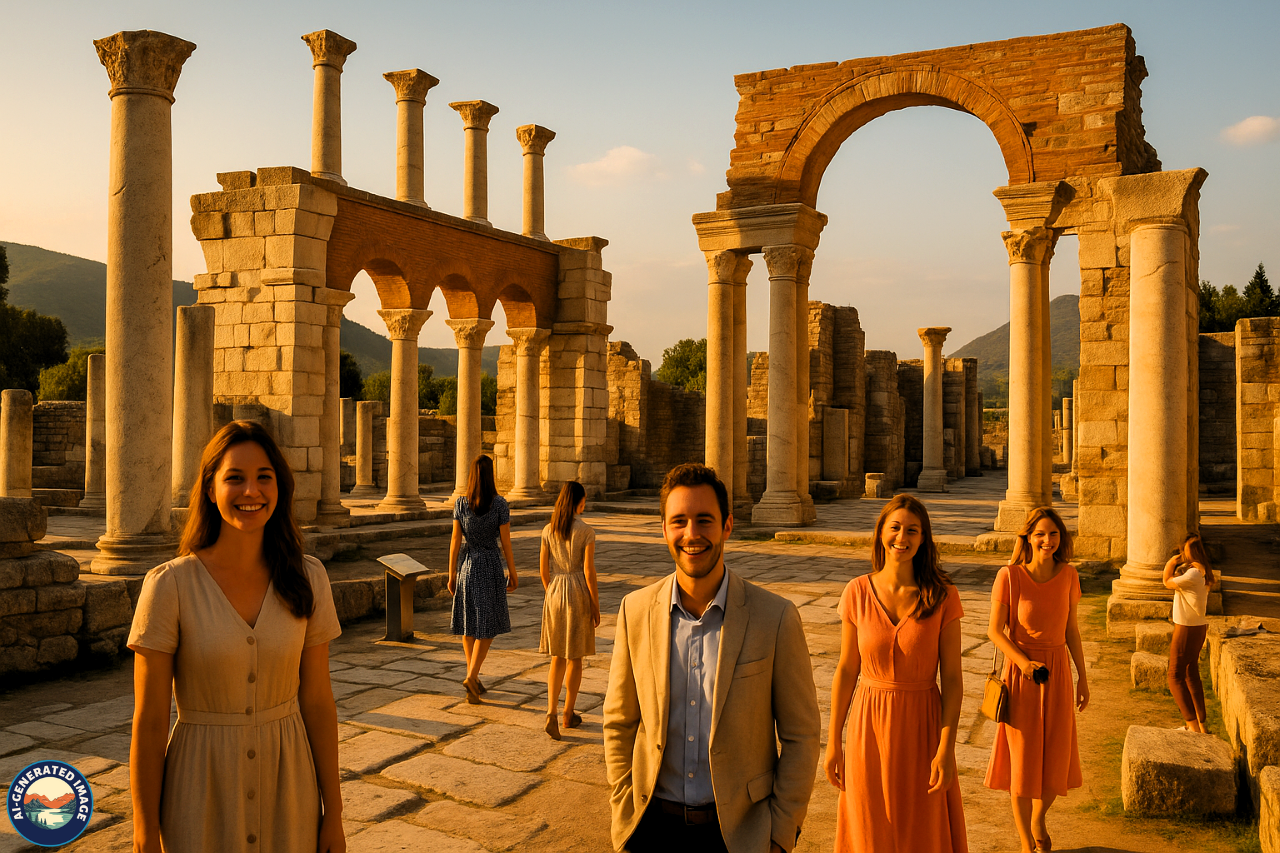
The Cultural and Religious Importance
Ephesus was a melting pot of beliefs and traditions. In its prime, it drew pilgrims from across the ancient world to honor Artemis. The city was alive with festivals, processions, and rituals that blended sacred tradition with public spectacle.
As Christianity spread, Ephesus became an important center of the early Church. Saint Paul lived here for several years, and the city is mentioned in biblical texts. The nearby House of the Virgin Mary, where she is believed to have spent her final years, continues to attract pilgrims.
This convergence of pagan and Christian histories makes Ephesus a unique and meaningful destination for people of diverse faiths.
Visiting Ephesus Today
Getting There
Izmir’s Adnan Menderes Airport is the main gateway for visitors. From there, Selçuk can be reached by train, bus, or car in about an hour. Many tours operate from Izmir, Selçuk, or the resort town of Kuşadası. Cruise passengers often visit Ephesus as a day trip from Kuşadası’s port.
When to Go
The best months to explore Ephesus are from April to June and from September to November. During these periods, the weather is mild and pleasant. Summer can bring intense heat and crowds, while winter is quieter but wetter.
Tickets and Hours
The site typically opens around 8:00 AM and closes by early evening, with slight variations by season. Tickets can be purchased on-site or online. Additional entry fees apply to certain areas, such as the Terrace Houses.
Tours or Self-Guided Visits
Guided tours are widely available and can enrich your visit with expert insights. Alternatively, independent travelers can use guidebooks or apps to explore at their own pace. Both options allow visitors to appreciate the grandeur of the ancient city.
Where to Stay
Selçuk offers cozy hotels and guesthouses close to the site, while Kuşadası provides a range of options, from budget-friendly stays to luxury resorts by the sea.
Tips for Exploring Ephesus
-
Wear comfortable shoes —
-
The ancient paths are uneven.
-
Carry water, a hat, and sunscreen —
-
Shade is limited.
-
Allow enough time to appreciate the major sights, plan at least 3-4 hours.
-
Photography is best in the morning or late afternoon for softer lighting.
-
Follow site rules —
-
Climbing on structures is prohibited to protect the ruins.
-
Those with mobility challenges should inquire about accessible routes, as not all areas are easy to navigate.
Nearby Highlights
-
House of the Virgin Mary:
-
A tranquil site on Mount Koressos, important for Christian visitors.
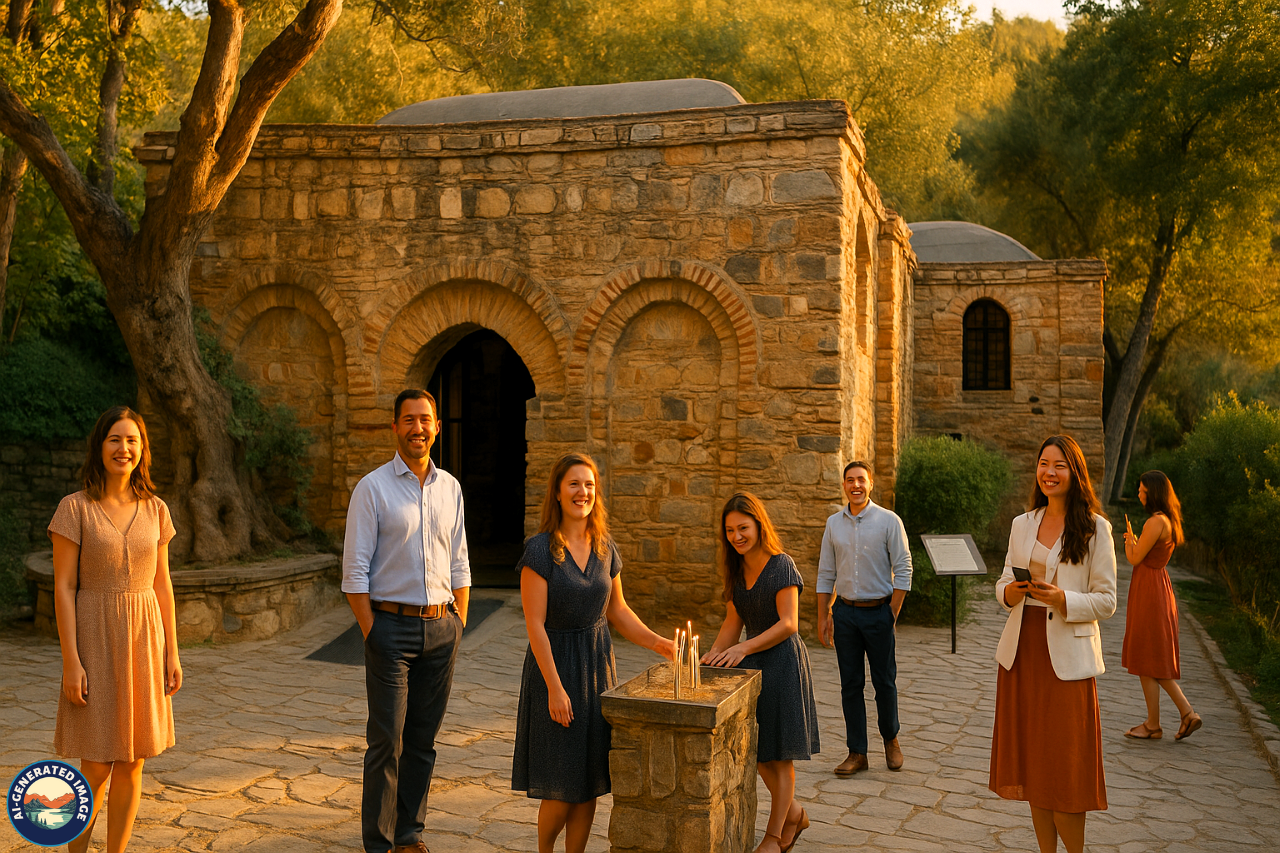
-
Ephesus Museum:
-
A small but rich collection of artifacts was unearthed at the site.
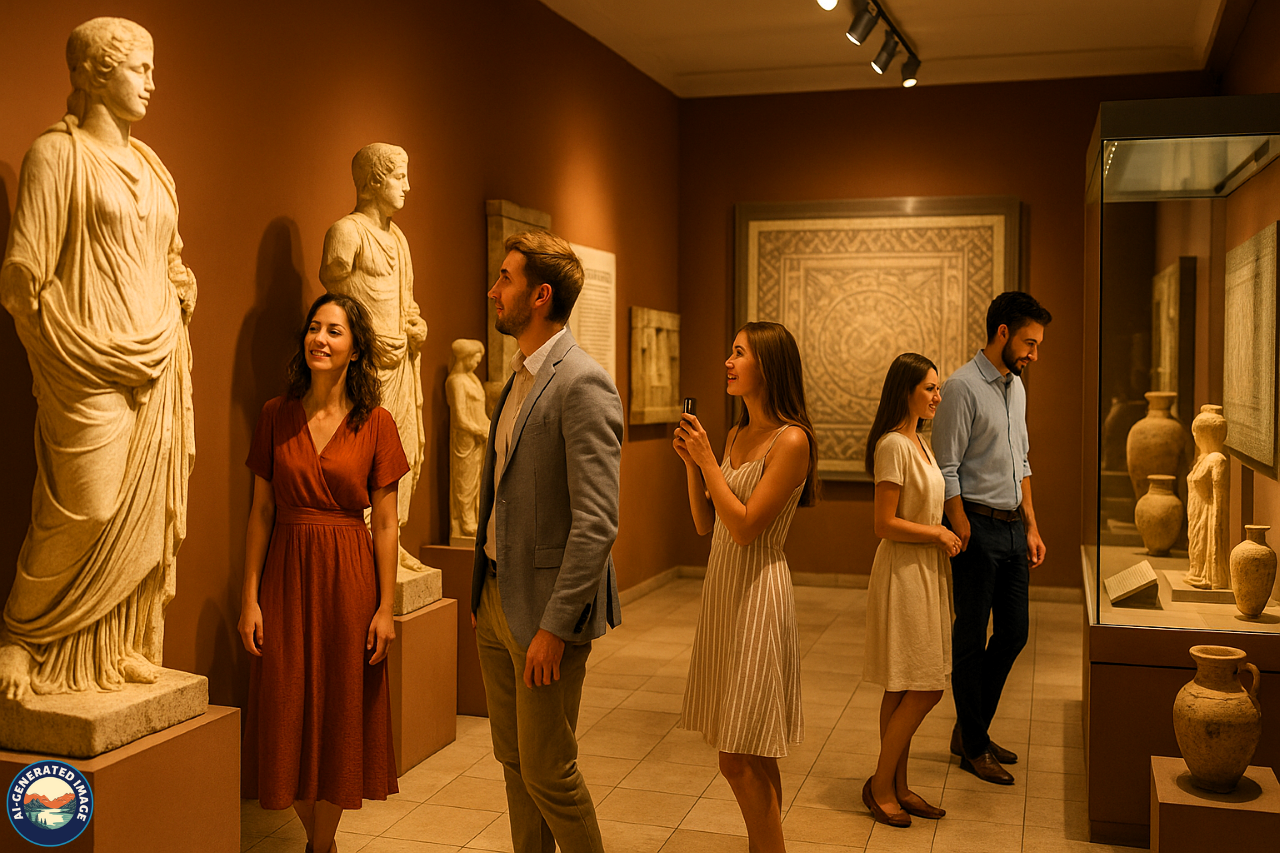
-
Şirince Village:
-
A delightful hillside village famous for fruit wines and local crafts.
-
Pamucak Beach:
-
A sandy escape not far from the ruins, ideal for relaxing after a day of exploring.
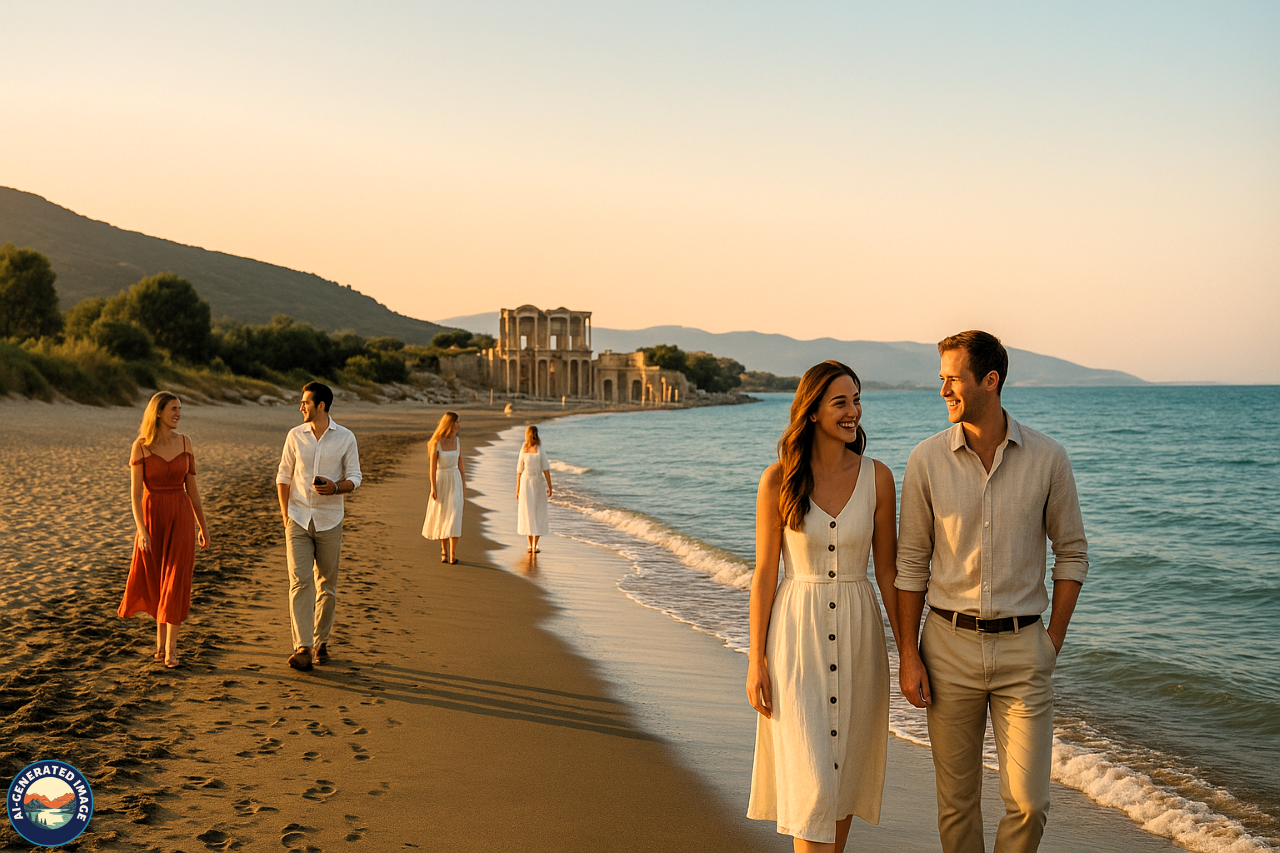
-
Temple of Artemis site:
-
Though little remains, the location of this ancient wonder is a thought-provoking stop.
Conclusion
Ephesus is more than a collection of ancient stones; it is a place where history, culture, and legend intertwine. Exploring its streets and monuments offers a window into a world that shaped religion, art, and trade for centuries. Whether you visit for its history, spirituality, or sheer beauty, Ephesus will leave you with lasting memories of the ancient world’s enduring wonders.
FAQs
How long does it take to tour Ephesus?
A basic tour takes about 3-4 hours, but history lovers may want to spend longer, especially if visiting nearby sites.
Is Ephesus suitable for families?
Yes. Children may find the large structures exciting, but it is wise to plan breaks and bring snacks and water.
What should I wear?
Light, breathable clothing and sturdy shoes are recommended. A hat and sunscreen are essential in warm weather.
Are there places to eat at the site?
No eateries are within the ruins, but Selçuk and the site entrance have restaurants and cafes.
Is the site wheelchair accessible?
Parts of the main path are manageable with assistance, but the terrain can be challenging in places.
Can I take photos?
Photography for personal use is allowed. Drone usage may require special permissions.
Are tours available in different languages?
Yes, you will find guides offering tours in many languages, including English, German, French, and others.

